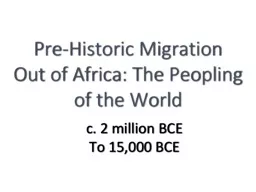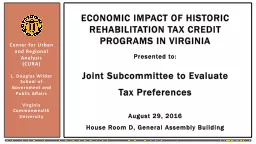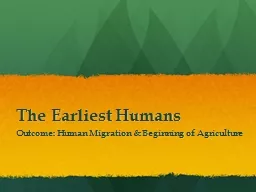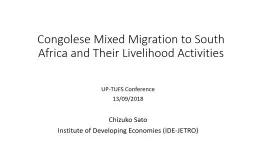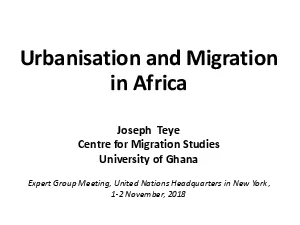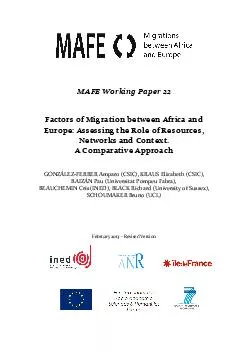PPT-Pre-Historic Migration Out of Africa: The Peopling of the World
Author : evelyn | Published Date : 2021-01-27
c 2 million BCE To 15000 BCE Unit 1 8000 BCE to 600 BCE Out of Africa Humans Spread Across Globe Hominids Arose in Africa 12 million years ago Migrated throughout
Presentation Embed Code
Download Presentation
Download Presentation The PPT/PDF document "Pre-Historic Migration Out of Africa: Th..." is the property of its rightful owner. Permission is granted to download and print the materials on this website for personal, non-commercial use only, and to display it on your personal computer provided you do not modify the materials and that you retain all copyright notices contained in the materials. By downloading content from our website, you accept the terms of this agreement.
Pre-Historic Migration Out of Africa: The Peopling of the World: Transcript
Download Rules Of Document
"Pre-Historic Migration Out of Africa: The Peopling of the World"The content belongs to its owner. You may download and print it for personal use, without modification, and keep all copyright notices. By downloading, you agree to these terms.
Related Documents

